Metabolomics combined with network pharmacology reveals a role for astragaloside IV in inhibiting enterovirus 71 replication via PI3K-AKT signaling
- PMID: 38858642
- PMCID: PMC11163744
- DOI: 10.1186/s12967-024-05355-9
Metabolomics combined with network pharmacology reveals a role for astragaloside IV in inhibiting enterovirus 71 replication via PI3K-AKT signaling
Abstract
Background: Astragaloside IV (AST-IV), as an effective active ingredient of Astragalus membranaceus (Fisch.) Bunge. It has been found that AST-IV inhibits the replication of dengue virus, hepatitis B virus, adenovirus, and coxsackievirus B3. Enterovirus 71 (EV71) serves as the main pathogen in severe hand-foot-mouth disease (HFMD), but there are no specific drugs available. In this study, we focus on investigating whether AST-IV can inhibit EV71 replication and explore the potential underlying mechanisms.
Methods: The GES-1 or RD cells were infected with EV71, treated with AST-IV, or co-treated with both EV71 and AST-IV. The EV71 structural protein VP1 levels, the viral titers in the supernatant were measured using western blot and 50% tissue culture infective dose (TCID50), respectively. Network pharmacology was used to predict possible pathways and targets for AST-IV to inhibit EV71 replication. Additionally, ultra-high performance liquid chromatography-high resolution mass spectrometry (UHPLC-HRMS) was used to investigate the potential targeted metabolites of AST-IV. Associations between metabolites and apparent indicators were performed via Spearman's algorithm.
Results: This study illustrated that AST-IV effectively inhibited EV71 replication. Network pharmacology suggested that AST-IV inhibits EV71 replication by targeting PI3K-AKT. Metabolomics results showed that AST-IV achieved these effects by elevating the levels of hypoxanthine, 2-ketobutyric acid, adenine, nicotinic acid mononucleotide, prostaglandin H2, 6-hydroxy-1 H-indole-3- acetamide, oxypurinol, while reducing the levels of PC (14:0/15:0). Furthermore, AST-IV also mitigated EV71-induced oxidative stress by reducing the levels of MDA, ROS, while increasing the activity of T-AOC, CAT, GSH-Px. The inhibition of EV71 replication was also observed when using the ROS inhibitor N-Acetylcysteine (NAC). Additionally, AST-IV exhibited the ability to activate the PI3K-AKT signaling pathway and suppress EV71-induced apoptosis.
Conclusion: This study suggests that AST-IV may activate the cAMP and the antioxidant stress response by targeting eight key metabolites, including hypoxanthine, 2-ketobutyric acid, adenine, nicotinic acid mononucleotide, prostaglandin H2, 6-Hydroxy-1 H-indole-3-acetamide, oxypurinol and PC (14:0/15:0). This activation can further stimulate the PI3K-AKT signaling to inhibit EV71-induced apoptosis and EV71 replication.
Keywords: Astragaloside IV; Enterovirus 71; Metabolomics; Network pharmacology; Oxidative stress response; PI3K-AKT signaling.
© 2024. The Author(s).
Conflict of interest statement
The authors declare no competing interests.
Figures


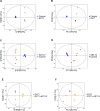

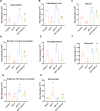
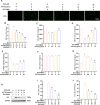
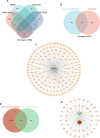

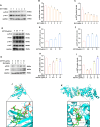

Similar articles
-
Pilaralisib inhibits the replication of enteroviruses by targeting the PI3K/AKT signaling pathway.Virol J. 2025 Jul 28;22(1):257. doi: 10.1186/s12985-025-02881-w. Virol J. 2025. PMID: 40717083 Free PMC article.
-
Metabolomics combined with network pharmacology reveals the protective effect of astragaloside IV on alcoholic liver disease.Phytomedicine. 2024 Dec;135:156032. doi: 10.1016/j.phymed.2024.156032. Epub 2024 Sep 6. Phytomedicine. 2024. PMID: 39270570
-
[Mechanism of astragaloside Ⅳ combined with Panax notoginseng saponins in regulating angiogenesis to treat cerebral ischemia based on network pharmacology and experimental verification].Zhongguo Zhong Yao Za Zhi. 2024 Feb;49(4):1017-1027. doi: 10.19540/j.cnki.cjcmm.20230901.401. Zhongguo Zhong Yao Za Zhi. 2024. PMID: 38621909 Chinese.
-
Salvianolic Acid B Inhibits Hand-Foot-Mouth Disease Enterovirus 71 Replication through Enhancement of AKT Signaling Pathway.J Microbiol Biotechnol. 2020 Jan 28;30(1):38-43. doi: 10.4014/jmb.1907.07079. J Microbiol Biotechnol. 2020. PMID: 31752055 Free PMC article.
-
Astragaloside IV regulates the ferroptosis signaling pathway via the Nrf2/SLC7A11/GPX4 axis to inhibit PM2.5-mediated lung injury in mice.Int Immunopharmacol. 2022 Nov;112:109186. doi: 10.1016/j.intimp.2022.109186. Epub 2022 Sep 15. Int Immunopharmacol. 2022. PMID: 36115280 Review.
Cited by
-
BuyangHuanwu Decoction alleviates Endothelial Cell Apoptosis and Coronary Microvascular Dysfunction via Regulation of the MAPKK4/p38 Signaling Axis.Int J Med Sci. 2024 Sep 23;21(13):2464-2479. doi: 10.7150/ijms.98183. eCollection 2024. Int J Med Sci. 2024. PMID: 39439466 Free PMC article.
-
Severe enterovirus A71 infection is associated with dysfunction of T cell immune response and alleviated by Astragaloside A.Virol Sin. 2025 Jun;40(3):451-461. doi: 10.1016/j.virs.2025.05.010. Epub 2025 May 29. Virol Sin. 2025. PMID: 40449890 Free PMC article.
-
Inactivated Lactiplantibacillus plantarum Ps-8 enhances growth performance and intestinal health in broiler chickens via gut microbiota and serum metabolite modulation.Poult Sci. 2025 Jul 26;104(10):105611. doi: 10.1016/j.psj.2025.105611. Online ahead of print. Poult Sci. 2025. PMID: 40752195 Free PMC article.
References
-
- Nguyen TT, Chiu CH, Lin CY, Chiu NC, Chen PY, Le TTV, Le DN, Duong AH, Nguyen VL, Huynh TN, et al. Efficacy, safety, and immunogenicity of an inactivated, adjuvanted enterovirus 71 vaccine in infants and children: a multiregion, double-blind, randomised, placebo-controlled, phase 3 trial. Lancet. 2022;399:1708–17. doi: 10.1016/S0140-6736(22)00313-0. - DOI - PubMed
-
- Zhan X, Wu R, Kong XH, You Y, He K, Sun XY, Huang Y, Chen WX, Duan L. Elevated neutrophil extracellular traps by HBV-mediated S100A9-TLR4/RAGE-ROS cascade facilitate the growth and metastasis of hepatocellular carcinoma. Cancer Commun (Lond) 2023;43:225–45. doi: 10.1002/cac2.12388. - DOI - PMC - PubMed
-
- Jadaun P, Shah P, Harshithkumar R, Said MS, Bhoite SP, Bokuri S, Ravindran S, Mishra N, Mukherjee A. Antiviral and ROS scavenging potential of Carica papaya Linn and Psidium guajava leaves extract against HIV-1 infection. BMC Complement Med Ther. 2023;23:82. doi: 10.1186/s12906-023-03916-x. - DOI - PMC - PubMed
MeSH terms
Substances
Grants and funding
- 81301426/the National Natural Science Foundation of China
- 201901D111329/the Provincial Natural Science Foundation of Shanxi
- 202102130501005/Key Research and Development Plan of Shanxi Province
- 2020SHFZ38/the Mega Research and Development Projects of Lüliang
- 2020ZDSYS17/the Key Laboratory Platform Construction Projects of Lüliang
LinkOut - more resources
Full Text Sources
Miscellaneous

